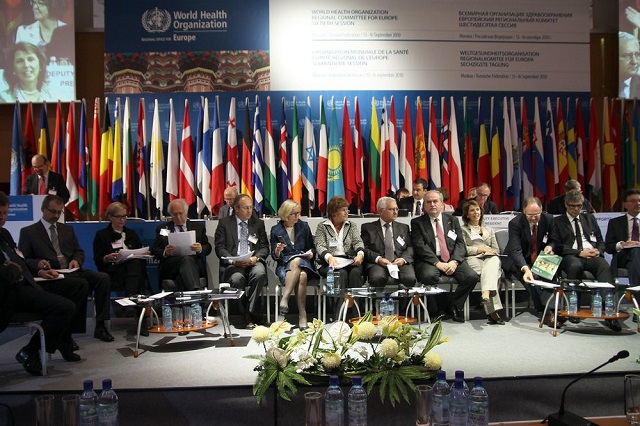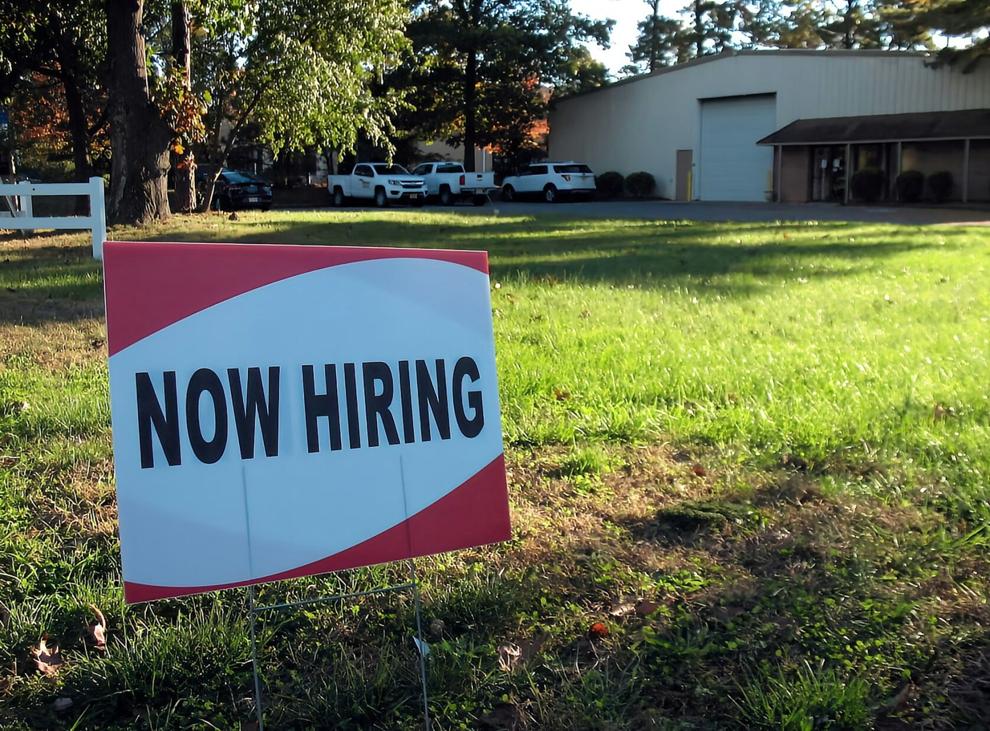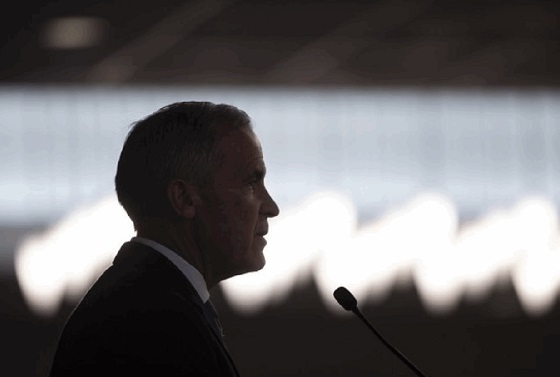Economy
The people will reject the globalist ‘climate’ agenda

From the Fraser Institute
” representatives of governments worldwide endorsed policies that will, if implemented, do extraordinary harm to their own people. Where governments have made even small attempts to take these radical steps, the public has revolted. This calls into question whom the COP28 delegates “represent.” “
It’s tempting to dismiss the outcome of COP28, the recent United Nations climate change conference in the United Arab Emirates, as mere verbiage, such as the “historic” UAE Consensus about transitioning away from fossil fuels. After all, this is the 28th such conference and the previous ones all pretty much came to nothing. On a chart showing the steady rise in global total CO2 emissions since 1950 you cannot spot when the 1997 Kyoto Protocol entered into force (2002), with its supposedly historic language binding developed countries to cap their CO2 emissions at five per cent below 1990 levels by 2012. Likewise, the 2015 Paris Agreement contained historic language binding countries to further deep emission reductions, yet the COP28 declaration begins (paragraph I.2) with an admission that the parties are not complying.
Nonetheless we should not overlook the real meaning of the UAE Consensus. COP agreements used to focus on one thing—targets for reducing greenhouse gases. The UAE Consensus is very different. Across its 196 paragraphs and 10 supplementary declarations it’s a manifesto of global central planning. Some 90,000 government functionaries aspire, in their own words, to oversee and micromanage agriculture, finance, energy, manufacturing, gender relations, health care, air conditioning, building design, and countless other economic and social decisions. It’s supposedly in the name of fighting climate change, but that’s just the pretext. Take it away and they’d appeal to something else.
After all, the climate change issue doesn’t necessitate these plans. Economists have been studying climate change for many decades and have never considered it grounds to phase out fossil fuels, micromanage society, etc. Mainstream scientific findings, coupled with mainstream economic analysis, prescribes moderate emission-pricing policies that rely much more on adaptation than mitigation.
The fact that the UAE Consensus is currently non-binding is beside the point. What matters is what the COP28 delegates said they want to achieve. Two facts stand out—the final consensus document announced plans that would cause enormous economic harm if implemented, and it was unanimously approved by everyone in the room.
The first point is best illustrated by the language around eliminating fossil fuels. Climate policy is supposed to be about optimally reducing greenhouse gas (GHG) emissions. As technology develops to decouple emissions from fuel use, there may eventually be no need to reduce the latter, but activist delegates insisted on the language anyway, making it an end in itself. Fossil fuels are essential for our economic standard of living, and 30 years of economic analysis has consistently shown that despite GHG emissions, phasing them out would do far more harm than good to humanity. Yet the Consensus statement ignored that, even while claiming to be guided by “the science.”
The second point refers to the fact that representatives of governments worldwide endorsed policies that will, if implemented, do extraordinary harm to their own people. Where governments have made even small attempts to take these radical steps, the public has revolted. This calls into question whom the COP28 delegates “represent.” Other than a few elected officials, we didn’t vote for any of them. And even if some heads of state go to a COP meeting intending to oppose the overall agenda, they would not be able to stop it and would be browbeaten into signing the final package.
The UAE Consensus is the latest signal that the real fault line in contemporary society is not right versus left, it’s the people versus (for lack of a better word) the globalists. A decade ago this term was only heard on the conspiracy fringe but has since migrated towards the mainstream as the most apt descriptor of an enormous and influential transnational permanent bureaucracy, which aspires to run everything, even to the public’s detriment, while insulating themselves from democratic limits.
A hallmark of globalists is the way they exempt themselves from rules they want to impose on everyone else. COP28 and Davos meetings perfectly illustrate this—thousands of delegates flying in, many on private jets, to be wined and dined while telling everyone else to learn to do without.
In the cases of both COVID-19 and climate change, the same elite has proven itself to be adept, not at using science to support good decision-making, but at invoking “the science” as a talisman to justify everything they do including censoring public debate. Complex and uncertain matters get reduced to dogmatic slogans by technocrats who ensure political leaders are force fed a narrow one-sided information stream. Experts outside the process are accorded standing based solely on their obeisance to the preferred narrative, not their knowledge or qualifications. Critics are attacked as purveyors of “misinformation” and “disinformation,” and so the existence of opposition to government plans becomes proof of the need to suppress free speech.
But eventually the people get the last word. I am struck, in this context, that despite nonstop fearmongering about an alleged climate crisis, the public tolerates climate policy only insofar as it doesn’t cost anything.
The climate movement might think that by embedding itself in the globalist elite it can accelerate policy adoption without needing to win elections. I think the opposite is happening. The globalists have coopted the climate issue to sell a grotesque central planning agenda that the public has repeatedly rejected. If the UAE Consensus is the future of climate policy, its failure is guaranteed.
Author:
It’s tempting to dismiss the outcome of COP28, the recent United Nations climate change conference in the United Arab Emirates, as mere verbiage, such as the “historic” UAE Consensus about transitioning away from fossil fuels. After all, this is the 28th such conference and the previous ones all pretty much came to nothing. On a chart showing the steady rise in global total CO2 emissions since 1950 you cannot spot when the 1997 Kyoto Protocol entered into force (2002), with its supposedly historic language binding developed countries to cap their CO2 emissions at five per cent below 1990 levels by 2012. Likewise, the 2015 Paris Agreement contained historic language binding countries to further deep emission reductions, yet the COP28 declaration begins (paragraph I.2) with an admission that the parties are not complying.
Nonetheless we should not overlook the real meaning of the UAE Consensus. COP agreements used to focus on one thing—targets for reducing greenhouse gases. The UAE Consensus is very different. Across its 196 paragraphs and 10 supplementary declarations it’s a manifesto of global central planning. Some 90,000 government functionaries aspire, in their own words, to oversee and micromanage agriculture, finance, energy, manufacturing, gender relations, health care, air conditioning, building design, and countless other economic and social decisions. It’s supposedly in the name of fighting climate change, but that’s just the pretext. Take it away and they’d appeal to something else.
After all, the climate change issue doesn’t necessitate these plans. Economists have been studying climate change for many decades and have never considered it grounds to phase out fossil fuels, micromanage society, etc. Mainstream scientific findings, coupled with mainstream economic analysis, prescribes moderate emission-pricing policies that rely much more on adaptation than mitigation.
The fact that the UAE Consensus is currently non-binding is beside the point. What matters is what the COP28 delegates said they want to achieve. Two facts stand out—the final consensus document announced plans that would cause enormous economic harm if implemented, and it was unanimously approved by everyone in the room.
The first point is best illustrated by the language around eliminating fossil fuels. Climate policy is supposed to be about optimally reducing greenhouse gas (GHG) emissions. As technology develops to decouple emissions from fuel use, there may eventually be no need to reduce the latter, but activist delegates insisted on the language anyway, making it an end in itself. Fossil fuels are essential for our economic standard of living, and 30 years of economic analysis has consistently shown that despite GHG emissions, phasing them out would do far more harm than good to humanity. Yet the Consensus statement ignored that, even while claiming to be guided by “the science.”
The second point refers to the fact that representatives of governments worldwide endorsed policies that will, if implemented, do extraordinary harm to their own people. Where governments have made even small attempts to take these radical steps, the public has revolted. This calls into question whom the COP28 delegates “represent.” Other than a few elected officials, we didn’t vote for any of them. And even if some heads of state go to a COP meeting intending to oppose the overall agenda, they would not be able to stop it and would be browbeaten into signing the final package.
The UAE Consensus is the latest signal that the real fault line in contemporary society is not right versus left, it’s the people versus (for lack of a better word) the globalists. A decade ago this term was only heard on the conspiracy fringe but has since migrated towards the mainstream as the most apt descriptor of an enormous and influential transnational permanent bureaucracy, which aspires to run everything, even to the public’s detriment, while insulating themselves from democratic limits.
A hallmark of globalists is the way they exempt themselves from rules they want to impose on everyone else. COP28 and Davos meetings perfectly illustrate this—thousands of delegates flying in, many on private jets, to be wined and dined while telling everyone else to learn to do without.
In the cases of both COVID-19 and climate change, the same elite has proven itself to be adept, not at using science to support good decision-making, but at invoking “the science” as a talisman to justify everything they do including censoring public debate. Complex and uncertain matters get reduced to dogmatic slogans by technocrats who ensure political leaders are force fed a narrow one-sided information stream. Experts outside the process are accorded standing based solely on their obeisance to the preferred narrative, not their knowledge or qualifications. Critics are attacked as purveyors of “misinformation” and “disinformation,” and so the existence of opposition to government plans becomes proof of the need to suppress free speech.
But eventually the people get the last word. I am struck, in this context, that despite nonstop fearmongering about an alleged climate crisis, the public tolerates climate policy only insofar as it doesn’t cost anything.
The climate movement might think that by embedding itself in the globalist elite it can accelerate policy adoption without needing to win elections. I think the opposite is happening. The globalists have coopted the climate issue to sell a grotesque central planning agenda that the public has repeatedly rejected. If the UAE Consensus is the future of climate policy, its failure is guaranteed.
Author:
Business
Socialism vs. Capitalism

People criticize capitalism. A recent Axios-Generation poll says, “College students prefer socialism to capitalism.”
Why?
Because they believe absurd myths. Like the claim that the Soviet Union “wasn’t real socialism.”
Socialism guru Noam Chomsky tells students that. He says the Soviet Union “was about as remote from socialism as you could imagine.”
Give me a break.
The Soviets made private business illegal.
If that’s not socialism, I’m not sure what is.
“Socialism means abolishing private property and … replacing it with some form of collective ownership,” explains economist Ben Powell. “The Soviet Union had an abundance of that.”
Socialism always fails. Look at Venezuela, the richest country in Latin America about 40 years ago. Now people there face food shortages, poverty, misery and election outcomes the regime ignores.
But Al Jazeera claims Venezuela’s failure has “little to do with socialism, and a lot to do with poor governance … economic policies have failed to adjust to reality.”
“That’s the nature of socialism!” exclaims Powell. “Economic policies fail to adjust to reality. Economic reality evolves every day. Millions of decentralized entrepreneurs and consumers make fine tuning adjustments.”
Political leaders can’t keep up with that.
Still, pundits and politicians tell people, socialism does work — in Scandinavia.
“Mad Money’s Jim Cramer calls Norway “as socialist as they come!”
This too is nonsense.
“Sweden isn’t socialist,” says Powell. “Volvo is a private company. Restaurants, hotels, they’re privately owned.”
Norway, Denmark and Sweden are all free market economies.
Denmark’s former prime minister was so annoyed with economically ignorant Americans like Bernie Sanders calling Scandanavia “socialist,” he came to America to tell Harvard students that his country “is far from a socialist planned economy. Denmark is a market economy.”
Powell says young people “hear the preaching of socialism, about equality, but they don’t look on what it actually delivers: poverty, starvation, early death.”
For thousands of years, the world had almost no wealth creation. Then, some countries tried capitalism. That changed everything.
“In the last 20 years, we’ve seen more humans escape extreme poverty than any other time in human history, and that’s because of markets,” says Powell.
Capitalism makes poor people richer.
Former Rep. Jamaal Bowman (D-N.Y.) calls capitalism “slavery by another name.”
Rep. Alexandria Ocasio-Cortez (D-N.Y.) claims, “No one ever makes a billion dollars. You take a billion dollars.”
That’s another myth.
People think there’s a fixed amount of money. So when someone gets rich, others lose.
But it’s not true. In a free market, the only way entrepreneurs can get rich is by creating new wealth.
Yes, Steve Jobs pocketed billions, but by creating Apple, he gave the rest of us even more. He invented technology that makes all of us better off.
“I hope that we get 100 new super billionaires,” says economist Dan Mitchell, “because that means 100 new people figured out ways to make the rest of our lives better off.”
Former Labor Secretary Robert Reich advocates the opposite: “Let’s abolish billionaires,” he says.
He misses the most important fact about capitalism: it’s voluntary.
“I’m not giving Jeff Bezos any money unless he’s selling me something that I value more than that money,” says Mitchell.
It’s why under capitalism, the poor and middle class get richer, too.
“The economic pie grows,” says Mitchell. “We are much richer than our grandparents.”
When the media say the “middle class is in decline,” they’re technically right, but they don’t understand why it’s shrinking.
“It’s shrinking because more and more people are moving into upper income quintiles,” says Mitchell. “The rich get richer in a capitalist society. But guess what? The rest of us get richer as well.”
I cover more myths about socialism and capitalism in my new video.
Business
Residents in economically free states reap the rewards

From the Fraser Institute
A report published by the Fraser Institute reaffirms just how much more economically free some states are compared with others. These are places where citizens are allowed to make more of their economic choices. Their taxes are lighter, and their regulatory burdens are easier. The benefits for workers, consumers and businesses have been clear for a long time.
There’s another group of states to watch: “movers” that have become much freer in recent decades. These are states that may not be the freest, but they have been cutting taxes and red tape enough to make a big difference.
How do they fare?
I recently explored this question using 22 years of data from the same Economic Freedom of North America index. The index uses 10 variables encompassing government spending, taxation and labour regulation to assess the degree of economic freedom in each of the 50 states.
Some states, such as New Hampshire, have long topped the list. It’s been in the top five for three decades. With little room to grow, the Granite State’s level of economic freedom hasn’t budged much lately. Others, such as Alaska, have significantly improved economic freedom over the last two decades. Because it started so low, it remains relatively unfree at 43rd out of 50.
Three states—North Carolina, North Dakota and Idaho—have managed to markedly increase and rank highly on economic freedom.
In 2000, North Carolina was the 19th most economically free state in the union. Though its labour market was relatively unhindered by the state’s government, its top marginal income tax rate was America’s ninth-highest, and it spent more money than most states.
From 2013 to 2022, North Carolina reduced its top marginal income tax rate from 7.75 per cent to 4.99 per cent, reduced government employment and allowed the minimum wage to fall relative to per-capita income. By 2022, it had the second-freest labour market in the country and was ninth in overall economic freedom.
North Dakota took a similar path, reducing its 5.54 per cent top income tax rate to 2.9 per cent, scaling back government employment, and lowering its minimum wage to better reflect local incomes. It went from the 27th most economically free state in the union in 2000 to the 10th freest by 2022.
Idaho saw the most significant improvement. The Gem State has steadily improved spending, taxing and labour market freedom, allowing it to rise from the 28th most economically free state in 2000 to the eighth freest in 2022.
We can contrast these three states with a group that has achieved equal and opposite distinction: California, Delaware, New Jersey and Maryland have managed to decrease economic freedom and end up among the least free overall.
What was the result?
The economies of the three liberating states have enjoyed almost twice as much economic growth. Controlling for inflation, North Carolina, North Dakota and Idaho grew an average of 41 per cent since 2010. The four repressors grew by just 24 per cent.
Among liberators, statewide personal income grew 47 per cent from 2010 to 2022. Among repressors, it grew just 26 per cent.
In fact, when it comes to income growth per person, increases in economic freedom seem to matter even more than a state’s overall, long-term level of freedom. Meanwhile, when it comes to population growth, placing highly over longer periods of time matters more.
The liberators are not unique. There’s now a large body of international evidence documenting the freedom-prosperity connection. At the state level, high and growing levels of economic freedom go hand-in-hand with higher levels of income, entrepreneurship, in-migration and income mobility. In economically free states, incomes tend to grow faster at the top and bottom of the income ladder.
These states suffer less poverty, homelessness and food insecurity and may even have marginally happier, more philanthropic and more tolerant populations.
In short, liberation works. Repression doesn’t.
-

 Bruce Dowbiggin2 days ago
Bruce Dowbiggin2 days agoBe Careful What You Wish For In 2026: Mark Carney With A Majority
-

 Business14 hours ago
Business14 hours agoLargest fraud in US history? Independent Journalist visits numerous daycare centres with no children, revealing massive scam
-

 Energy2 days ago
Energy2 days agoNew Poll Shows Ontarians See Oil & Gas as Key to Jobs, Economy, and Trade
-

 Fraser Institute2 days ago
Fraser Institute2 days agoCarney government sowing seeds for corruption in Ottawa
-

 International2 days ago
International2 days agoNo peace on earth for ISIS: Trump orders Christmas strikes after Christian massacres
-

 Business14 hours ago
Business14 hours ago“Magnitude cannot be overstated”: Minnesota aid scam may reach $9 billion
-

 Alberta2 days ago
Alberta2 days agoAlberta Next Panel calls for less Ottawa—and it could pay off
-

 Alberta2 days ago
Alberta2 days agoAlberta project would be “the biggest carbon capture and storage project in the world”





